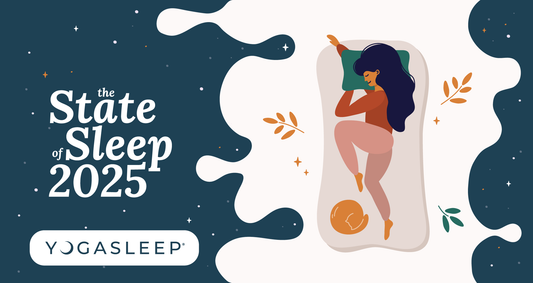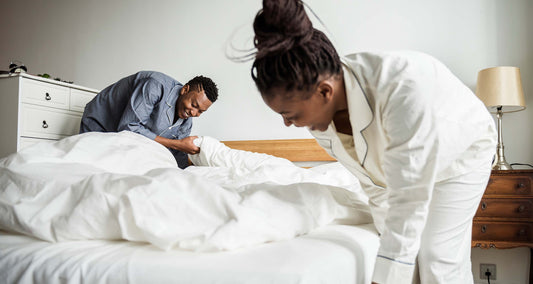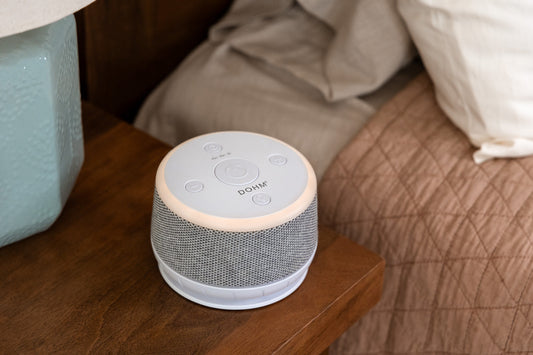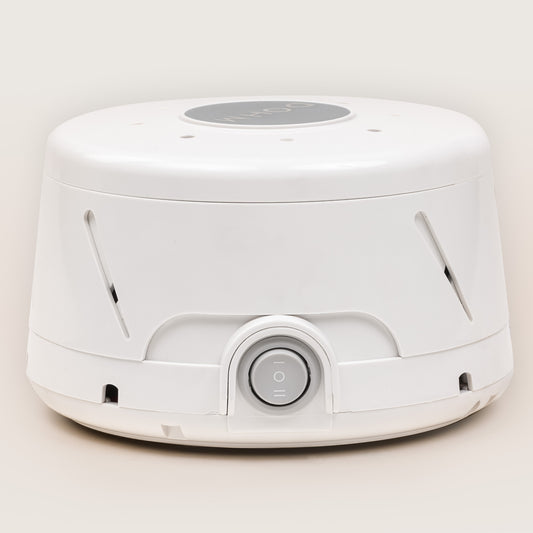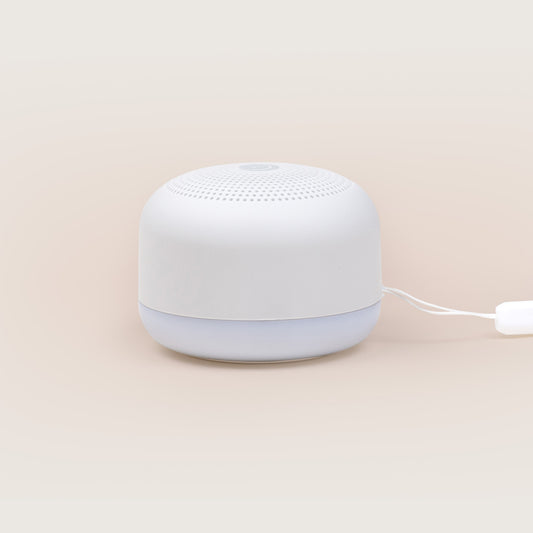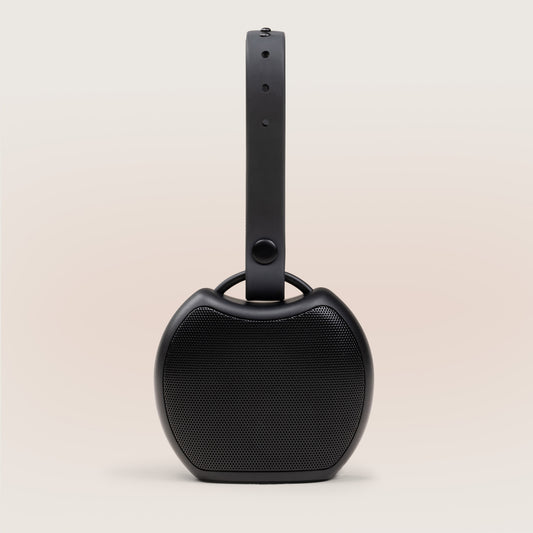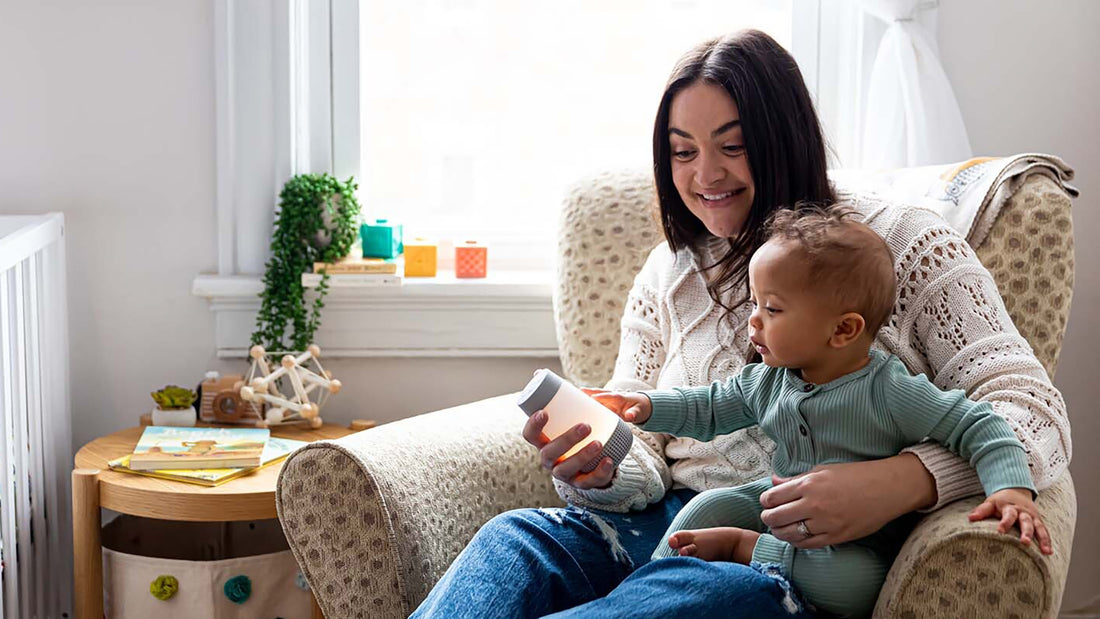
How Loud Should a White Noise Machine Be for Babies?
Creating a cozy and nurturing sleep environment for your baby is essential when it comes to their overall happiness, well-being, and growth. As parents, we all know that ensuring our babies get a good night’s sleep is a top priority. Among the various methods used to lull our little ones to sleep, white noise has gained popularity for its ability to mimic the comforting sounds of the womb and drown out other disturbances. However, determining the perfect volume of white noise for a baby's sleep can be a perplexing task, as striking the right balance between too loud and too soft is crucial. It’s extremely helpful to understand the science behind white noise, the potential benefits it offers for infants, and how to gauge the appropriate level of white noise to ensure a peaceful and restful sleep for baby.
The Importance of Sleep for Babies
Ensuring that your precious bundle of joy gets enough sleep is not just a matter of having peaceful nights for both you and your little one. Sleep is a critical factor in a baby's growth and development, profoundly affecting their mental and physical well-being.
Mental and Physical Development
In those early years of baby’s life, something truly remarkable is happening — their tiny brains are growing at an incredible pace. Sleep plays a pivotal role in this process, as it provides the necessary downtime for the brain to consolidate information, form connections, and lay the foundation for various cognitive skills. It's during deep sleep phases that the brain is most active in organizing and processing new information, helping babies learn and remember. Additionally, sleep is when growth hormones are released, contributing to physical development, muscle growth, and repair. So, when your baby gets the rest they need, it’s like giving them a head start in life. They’re more likely to hit those milestones, develop strong problem-solving abilities, and keep their immune systems strong and healthy.
Overall Health and Wellbeing
Making sure your little one gets enough sleep is crucial for their overall well-being. When babies don't get enough sleep, their immune systems can weaken, making them more susceptible to illnesses. Sleep also impacts hormones related to appetite and metabolism, which means that sleep-deprived babies may be at a higher risk of weight issues later in life. Furthermore, quality sleep helps with emotional regulation, reducing fussiness and irritability when they’re awake. Proper rest allows the body to repair tissues and recharge, leading to a happier, more alert, and less stressed baby. In essence, prioritizing your baby's sleep is a fundamental step in promoting their physical and emotional health.
The Benefits of White Noise for Babies
White noise, often compared to the gentle hum of a fan or the soothing sound of ocean waves, can be a powerful tool in creating an ideal sleep environment for babies. White noise masks disruptive sounds that might startle or wake a sleeping child, such as household noises or traffic outside. By providing a consistent and calming background noise, white noise helps babies transition from the womb's constant, rhythmic sounds to the relative silence of the outside world. Additionally, white noise can have a soothing and comforting effect, reducing a baby's stress levels and promoting relaxation. Many parents find that incorporating white noise into their baby's sleep routine can lead to longer and more restful sleep, which, as discussed earlier, is essential for their mental and physical development and overall well-being.
How Loud Should a White Noise Machine Be for Babies?
White noise machines can be a valuable tool in helping babies sleep, but it’s important to use them safely and effectively. When considering the volume of white noise for babies, it’s crucial to balance the need for a calming environment with the need to protect baby’s hearing.
Understanding Safe Sound Levels
The American Academy of Pediatrics (AAP) recommends that the sound level of white noise machines should be no louder than 50 decibels (dB) for infants. This level is comparable to a quiet conversation at home, ensuring the baby's environment is not overly loud. Placing your white noise machine at a reasonable distance — about 6.5 feet — from your baby's crib and avoiding placing it too close to their ears can also help maintain a safe sound level.
Regular Monitoring
It's a good idea to regularly check the volume of the white noise machine. This is especially important as some machines may have fluctuations in sound levels, or the volume could inadvertently be turned up.
Influential Factors
There are a few factors to consider when it comes to the volume of white noise and your little one:
- Baby’s Age and Sensitivity: Newborns and younger infants often require a quieter setting as their hearing is more sensitive. As babies grow, they may become more accustomed to slightly higher sound levels.
- Room Size: The size of the room can impact how loud the white noise needs to be. In a larger space, you may need a slightly higher volume to effectively drown out background noises.
- Background Noise: If your environment is particularly noisy, you may need to set the white noise machine at a higher volume to counteract those sounds effectively.
- Personal Preference: Every baby is unique, and what works best for one may not work for another. Pay attention to your baby’s cues and adjust the white noise volume accordingly.
Signs that White Noise is Too Loud for Baby
While white noise can be a savior in helping the whole family sleep, it's crucial to be vigilant for signs that the volume may be too high for your baby:
- Crying or Startling: If your baby starts crying or seems startled by the white noise, it may be too loud. Babies can become overwhelmed by excessive noise.
- Difficulty Falling Asleep: If your baby has trouble falling asleep or frequently wakes up shortly after falling asleep, the volume might be disrupting their sleep rather than helping it.
- Tightening of Muscles: Observe your baby's physical reactions. If you notice them tensing up or becoming agitated when the white noise is on, it may be too loud for their comfort.
- Unusual Behavior: Watch for any unusual behavior changes in your baby when the white noise is in use. These can include increased restlessness, irritability, or signs of discomfort.
To find the right balance, start with a lower volume and gradually increase it while monitoring your baby's response. Remember that the goal is to create a soothing and calming atmosphere that promotes restful sleep without causing any distress. By paying attention to your baby's cues and adjusting the white noise machine accordingly, you can create an environment that encourages peaceful slumber and contributes to their overall well-being.
Choosing the Right White Noise Machine
Not all white noise is created equal, and it’s important to select the right white noise machine for your family. While there are numerious options, a few key considerations can help you make the best choice:
- Sound Quality: Look for a white noise machine that produces high-quality, non-looping sounds. Yogasleep offers sleep sound machines with a wide range of options, including gentle fan-based sounds, nature sounds, and lullabies. This variety can be beneficial for catering to your baby's specific preferences.
- Volume Control: Ensure that the white noise machine you choose provides precise volume control, allowing you to adjust the sound to a comfortable level for your baby. This feature is especially important when it comes to staying within the recommended decibel range.
- Portability: Consider whether you need a portable white noise machine that can easily move between rooms or accompany you on trips. Compact and lightweight options can be a practical choice for families on the go.
- Timer Function: Some sound machines come with timer options, allowing you to set a specific duration for the white noise. This feature can be handy if you end up wanting to wean your baby off the need for white noise as they grow.
- Ease of Use: Choose a machine with user-friendly controls, as you'll want to be able to make adjustments quickly and easily, especially during nighttime awakenings.
- Safety: Ensure that the white noise machine adheres to safety standards and has no small parts that could pose a choking hazard to your baby.
- Reviews and Recommendations: Read reviews and seek recommendations from other parents to get insights into the effectiveness and reliability of the white noise machine you're considering.
By carefully evaluating these factors, you can find a white noise machine that meets your baby's needs and helps create a soothing and restful sleep environment. Remember that every baby is unique, so it may take some trial and error to find the perfect white noise machine that suits your little one's preferences and provides the calming ambiance they need for a peaceful night's sleep.
Additional Tips for a Better Baby Sleep Environment
Establish a Consistent Sleep Routine
Babies thrive on predictability. Set a regular bedtime and nap schedule to regulate their internal clock, making it easier for them to fall asleep and stay asleep. You might want to take a peek at our guide to getting newborns to sleep.
Ensure Comfort and Safety
Make your baby's sleep space comfortable, safe, and conducive to sleep. Maintain a comfortable room temperature, use a firm and properly fitted crib mattress, and keep the room dark and quiet. For more insights, check out our blog on "5 Mom-Tested Ways to Create a Calming Sleep Oasis for Baby.”
By following these additional sleep tips, you can enhance your baby's sleep environment and promote the restful slumber they need for healthy development.
Sound Asleep: Keeping Volume Levels Safe for Baby
In the quest for peaceful nights and well-rested babies, crafting the perfect sleep sanctuary is an art worth mastering. By incorporating these sleep tips and considering the use of a quality white noise machine, you can create an environment that nurtures your baby's sleep needs. Remember, consistency and safety are key, as is adapting these strategies to suit your unique little dreamer. With patience, determination, and a well-crafted sleep space, you'll be well on your way to a harmonious and restful sleep routine, both you and your baby can cherish. Sweet dreams!
Sources:
- https://www.ncbi.nlm.nih.gov/pmc/articles/PMC5440010/
- https://www.sleepfoundation.org/physical-health/obesity-and-sleep#:~:text=In%20fact%2C%20children%20who%20aren,Bedtime%20might%20also%20affect%20weight.
- https://www.healthline.com/health/parenting/white-noise-for-babies
Disclaimer: The information on our site is NOT medical advice for any specific person or condition. It is only meant as general information. If you have any medical questions and concerns about your sleep, please contact your healthcare provider.

